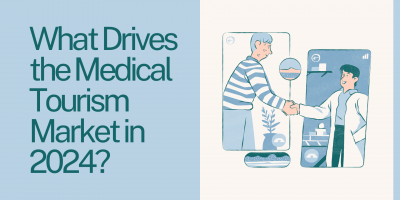
37 Work, Stress & COVID-19 Statistics
Explore 30+ statistics on work, stress, and the impact of COVID-19, providing valuable insights into the challenges employees face in today’s dynamic work environment.


MD, FAAOS & Clinical Director of Hand Surgery at Holy Name Medical Center

Founder of Family Chiropractic and Functional Medicine at Back in Balance Health

HR & Operations Director at First Aid at Work Course
For countless employees in the United States, work is a source of physical discomfort and pain.
In industries ranging from transportation to logistics, construction or manufacturing, retail to healthcare, workers are suffering from injuries on the job every day. Awkward postures, injuries from repetitive movements, and even overexertion can cause injuries to emerge after days, months, or even years.
In fact, both office and manual workers have a high chance of developing a work-related injury, among which carpal tunnel syndrome (CTS) is particularly prevalent.
Carpal tunnel syndrome is the most diagnosed nerve compression disorder among workers in the United States – and the most expensive musculoskeletal disorder (MSD).
For these reasons, forward-thinking businesses and HR leaders are turning to musculoskeletal programs as a scalable and convenient solution for carpal tunnel syndrome treatment and prevention.
Musculoskeletal conditions are comprised of over 150 various diseases that affect the muscles, bones, joints, and associated tissues such as ligaments and tendons. The ailments can have an acute onset, such as fractures, or manifest as lifelong conditions with ongoing chronic pain and disability.
Some examples of MSK conditions are:
Today, work-related musculoskeletal disorders (WMSDs) are the leading cause of physical disability in the United States, accounting for more than 130 million visits to healthcare providers every year.
Musculoskeletal disorders, often called ergonomic injuries, are the primary reason people visit their physician, affecting nearly half of American workers. In 2020, the private U.S. sector experienced close to 250,000 MSD injuries, resulting in days away from work.
For employers, musculoskeletal disorders represent a significant source of both direct costs in healthcare spending and indirect costs through loss of productivity and workdays.
In response, many companies are turning to corporate musculoskeletal (MSK) programs as a solution.
These workplace health initiatives are specifically designed to identify, prevent, and treat musculoskeletal disorders within the workplace, including conditions like carpal tunnel syndrome.
By offering such programs, employers can mitigate some associated costs through early interventions.

By now, it has been well established that certain occupational factors play a role in the development of musculoskeletal disorders.
For example, hunching in front of a computer puts the spine out of alignment and increases the risk of neck and back pain, leading to the popularized “tech neck syndrome,” or turtle-neck syndrome.
Similarly, a growing body of research suggests that if a worker’s role includes a lot of repetitive motions, such as typing, they have an increased risk for carpal tunnel syndrome (CTS).
Employers must have strategies to proactively address and eliminate some of the factors contributing to CTS’s development, such as providing appropriate Personal Protective Equipment (PPE) and regularly conducting ergonomic assessments and adjustments to workstations.
Unfortunately, awareness about the importance of these measures is often lacking in many corporate environments.
According to the Centers for Disease Control and Prevention (CDC), carpal tunnel syndrome occurs when one important nerve – the median nerve – is regularly pinched and compressed. As a result, workers frequently feel pain, tingling, and weakness, usually in the first three fingers of the hand and the base of the thumb.
There are certain professions where this particular work-related injury is more common than others, including musicians, assembly-line workers, writers, tailors, cashiers, locksmiths, mechanics, or any workers who use a computer regularly.
The leading causes for the development of carpal tunnel syndrome can include the following:
While carpal tunnel syndrome is more commonly present in women than men, anyone with the risk factors can develop the condition.
While white-collar jobs are typically considered non-hazardous, they are not without risks to employee’s health. A sedentary lifestyle, prolonged use of technological devices, and poor ergonomics can strain the body and cause long-term health issues.
Statistics estimate that the overall lifetime prevalence of CTS in the general population is 8%, ranging from 3.6% for adults who were never employed to 12.2% among former workers.
CTS tends to be most common during a person’s fifth decade of life, but it’s important to note that symptoms can begin earlier.
In fact, the latest statistics show that CTS is so common among the workforce that the National Institute for Occupational Safety and Health (NIOSH) has listed it as an occupational disease.
The impact of this condition on the workforce cannot be understated.
In the United States, CTS is the most reported medical condition, with close to 900,000 cases, and accounts for almost half of all work-related injury claims.

Clearly, CTS profoundly impacts workers’ health and, as a result, affects their productivity and wellbeing in the workplace, too.
Carpal tunnel, in particular, causes many limitations to mobility and dexterity, which can affect an employee’s ability to perform tasks that require fine motor skills, such as using a mouse, typing, or operating machinery.
Moreover, living with discomfort and pain not only affects the physical health of employees but also has a significant impact on their mental health and productivity.
For example, employees experiencing MSK pain missed an average of 8.2 days of work per year. This number increases to 13 days for those dealing with both MSK pain and mental health issues.
In addition, chronic MSK pain is the second most common reason workers call in sick to work, resulting in healthcare costs of $380 billion. When it comes to the economic burden of CTS, that’s only the beginning.
The economic cost to workers and employers from carpal tunnel and similar ergonomic workplace injuries can quickly add up.
The average direct cost of carpal tunnel workplace injury to employers is $30,930 per employee, according to OSHA’s $afety Pays Program calculator. However, the indirect losses are even higher, at $34,023 per employee.
Altogether, the costs for only one employee suffering from work-related carpal tunnel syndrome add up to $64,953, meaning a business would need total additional sales of $2,165,100 to pay for all the expenses.
However, the costs go above monetary losses.
Often, workers with carpal tunnel can no longer perform their duties and may have to quit their jobs or, at times, even retire early. In such cases, employers suffer additional costs such as loss of productivity and time spent onboarding and training new employees.

Chronic pain management, often stemming from untreated or poorly managed MSK issues, can lead to escalating medical and pharmacy costs.
In many cases, this situation culminates in surgical interventions, which, while necessary, could often be avoided with earlier, non-invasive treatments.
Engaging employees early in their care journey is crucial to make a difference in long-term health outcomes related to MSK conditions. In other words, not only providing workers with necessary treatments but also ensuring that they are aware of and participating in preventive measures.
Corporate MSK programs are pivotal in offering evidence-based treatment and prevention strategies.



When carpal tunnel syndrome is detected and treated early, its symptoms can be managed without surgery.
Dr. Joseph Rosenbaum, MD, FAAOS, a renowned Clinical Director of Hand Surgery at Holy Name Medical Center, sheds light on carpal tunnel syndrome treatment.
He explains, “The good news is that most of the time, CTS is not a very serious or debilitating condition. It can be treated with splinting, steroid injections, or, in severe or persistent cases, surgery.”
Yet, despite its relative manageability, CTS remains a significant concern.
It ranks as the second most common musculoskeletal surgery, following back operations, with about 230,000 procedures annually.
Over one-third of people with CTS require ongoing treatment, sometimes indefinitely. Even more concerning is the fact that as many as three-quarters of employees undergoing surgery find themselves unable to return to their previous jobs.
These statistics highlight not just the physical but also the occupational toll of CTS.

When it comes to managing musculoskeletal (MSK) disorders, particularly carpal tunnel syndrome, the approach to treatment can significantly impact patient outcomes.
However, individuals dealing with the discomfort and limited mobility associated with these conditions are inclined to choose more aggressive treatment methods. This can lead to a higher incidence of unnecessary surgeries and an increased reliance on opioid medications.
Instead of resorting to carpal tunnel syndrome medication, a more effective strategy for carpal tunnel syndrome treatment involves focusing on the root causes of the discomfort.
Employers are increasingly aware of the tendency to overuse surgical solutions for MSK issues and are adopting strategies to encourage more conservative use of these interventions.
These measures often involve implementing prior authorization for carpal tunnel syndrome surgeries, along with requirements for second opinions or decision-support programs.
Many employers turn to Centers of Excellence (COEs) arrangements when surgery is unavoidable. These arrangements ensure that employees receive treatment from top-tier healthcare providers and institutions.
This approach is gaining traction, with recent data showing that 52% of large employers currently offer COEs for MSK-related treatments, and an additional 17% are considering adopting them by 2025.
Rehabilitation from carpal tunnel syndrome surgeries can stretch from four months to a year, and the associated recovery costs often exceed the initial medical fees, potentially reaching up to $29,000.
Physical therapy (PT) is widely recognized as a crucial and effective first step in tackling carpal tunnel issues. Mainly, PT goes beyond just enhancing mobility; it significantly reduces chronic pain and the need for more invasive procedures like joint replacements and surgeries.
Carpal tunnel syndrome exercises, as part of PT, can be particularly beneficial in alleviating symptoms and improving hand function.
However, the journey with PT isn’t always straightforward.
One of the main challenges faced by patients is the commitment PT requires. The requirement for multiple in-person visits, often during regular work hours, poses a significant challenge for lower-income employees and those living in rural areas.
Add to this the financial aspect, and it becomes clear why patient adherence is a concern: less than 25% of those who start physical therapy complete the prescribed course.
It’s well established that workplace design plays a significant role in the health and productivity of employees. Modern office spaces are redesigned for better air quality, noise reduction, and optimal lighting.
However, another crucial aspect is creating spaces that prioritize ergonomic practices. So, how can business leaders and HR professionals incorporate ergonomic practices?
Derek Bruce, HR & Operations Director at First Aid at Work Course, describes their organization’s approach as twofold: educating their workforce about carpal tunnel syndrome and investing in ergonomic office setups.
Despite challenges like resource limitations, employee skepticism, and resistance to change, they overcame these through persistence, clear communication, and employee involvement.
Remarkably, this initiative led to a 60% decrease in CTS cases within a year. “Our comparative analysis reveals a significant reduction in CTS symptoms, proving the initiatives’ effectiveness,” Bruce states.
Adopting ergonomic practices in the workplace requires a tailored approach, as each employee’s daily tasks and routines are unique. Therefore, employers should consider these factors carefully to ensure appropriate and effective ergonomic adjustments.
Bruce shares, “Reflecting upon the entire process, several lessons surface that other companies can glean from this experience: it’s imperative to acknowledge the weight of an ergonomic and health-oriented workplace as a preventative measure against issues such as CTS.
Taking action proactively—rather than reactively—can significantly mitigate adverse impacts on employees’ wellbeing.”

To effectively prevent and address work-related musculoskeletal disorders (MSDs) like carpal tunnel syndrome, the Centers for Disease Control and Prevention advocates for a robust ergonomics program.
This program lists several vital strategies:
Echoing these sentiments, Dr. Anjali Agrawal, Founder of Family Chiropractic and Functional Medicine at Back in Balance Health, emphasizes the importance of educating both employers and employees.
She suggests employers should create ergonomically sound workspaces, avoiding casual settings like bean bags or barstools that encourage poor posture. She recommends dedicated workstations for focused tasks, with separate areas for socializing to maintain a healthy balance.
Dr. Agrawal also lists practical tips for alleviating or preventing CTS:
These comprehensive strategies, combining structural workplace changes with individual practices, form a practical approach to mitigating the risk of MSDs in the workplace.
In conclusion, corporate musculoskeletal program trends are evolving in response to a changing demographic and work environment landscape.
An aging population adds to this challenge, as older individuals are more prone to MSK conditions and their complications, often alongside other chronic illnesses.
The shift to remote working, accelerated by the COVID-19 pandemic, adds another layer to this complex issue.
In this new work era, where employees work in less-than-ideal home environments, the nature of MSK injuries changes. Also, it necessitates innovative approaches in corporate MSK programs to cater to a dispersed workforce.
As we look to the future, it is evident that carpal tunnel syndrome treatment plans must adapt to these trends. This includes integrating more personalized and age-sensitive approaches, focusing on preventive measures, and embracing technology to provide remote and accessible solutions.
Disclosure: Some of the products featured in this blog post may come from our partners who compensate us. This might influence the selection of products we feature and their placement and presentation on the page. However, it does not impact our evaluations; our opinions are our own. The information provided in this post is for general informational purposes only.
Senior Content Writer at Shortlister
Browse our curated list of vendors to find the best solution for your needs.
Subscribe to our newsletter for the latest trends, expert tips, and workplace insights!

Explore 30+ statistics on work, stress, and the impact of COVID-19, providing valuable insights into the challenges employees face in today’s dynamic work environment.

As a new generation of anti-obesity drugs like Ozempic, Wegovy, and Mounjaro can potentially improve millions of Americans’ health and lives, the question arises: what’s the hidden cost?

Telehealth, which surged in use during the pandemic, has now established itself as a permanent fixture in healthcare. But how does it fare against in-person care?

What compels someone to travel halfway around the world for a hip replacement or cancer therapy?
Used by most of the top employee benefits consultants in the US, Shortlister is where you can find, research and select HR and benefits vendors for your clients.
Shortlister helps you reach your ideal prospects. Claim your free account to control your message and receive employer, consultant and health plan leads.